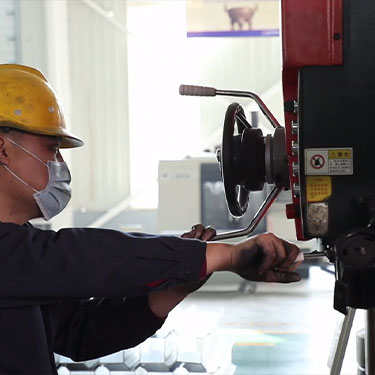
Dec . 04, 2024 19:03
Back to list
Pressure Regulation Station Installation and Maintenance Guidelines
Understanding Pressure Reduction Stations A Critical Component in Gas Distribution Systems
Pressure Reduction Stations (PRS) serve as vital infrastructure in natural gas distribution networks, ensuring that gas is delivered safely and efficiently at the appropriate pressure for consumer use. These stations play a crucial role in the overall gas supply chain, functioning between high-pressure gas transmission lines and lower-pressure distribution systems that serve residential, commercial, and industrial customers.
The Function of Pressure Reduction Stations
The primary purpose of a pressure reduction station is to lower the high pressure of natural gas as it comes from the transmission system. Natural gas is transported through pipelines under high pressure to prevent it from condensing into liquid. However, when the gas reaches the end-user, it needs to be at a significantly lower and regulated pressure to ensure safe and efficient usage. This is where PRS comes into play.
A typical PRS consists of several key components pressure regulators, safety valves, control systems, and sometimes, odorization systems to ensure gas safety. The pressure regulators are the heart of the station; they reduce the incoming high pressure to a predetermined lower pressure suitable for distribution. Safety valves are critical for preventing overpressure situations, which can lead to dangerous scenarios such as gas leaks or explosions. Control systems monitor pressure levels and can automatically adjust the operation of regulators, ensuring the gas is delivered within specified limits.
.
Safety is paramount in the operation of PRS. Natural gas is a flammable substance, and any leak or malfunction can pose significant risks to public safety. Therefore, regular maintenance and inspections are essential. Operators conduct routine checks to ensure all equipment is functioning correctly, and any issues are addressed promptly. This includes checking for leaks, testing the integrity of components, and calibrating the pressure control systems.
محطة تخفيض الضغط

Moreover, in many regions, PRS are equipped with advanced monitoring systems that can provide real-time data on pressure levels, flow rates, and system health. These technologies enable operators to respond swiftly to any abnormalities, further enhancing safety.
Environmental Considerations
As the world shifts towards more sustainable energy practices, Pressure Reduction Stations also face scrutiny concerning their environmental impact. While natural gas is considered cleaner than coal and oil, the extraction, transportation, and consumption of fossil fuels still contribute to greenhouse gas emissions. Therefore, operators are increasingly looking for ways to reduce the carbon footprint of PRS.
One approach is the implementation of hybrid systems that can integrate renewable energy sources. For example, some PRS are being designed with the capability to incorporate hydrogen blends into the gas supply, which can significantly reduce carbon emissions. As technology advances, the evolution of PRS will likely include more environmentally friendly practices.
Future Developments
Looking ahead, the role of Pressure Reduction Stations in energy distribution will evolve with the growing demand for renewable energy and changing energy policies. Innovations in smart grid technology may lead to more efficient and automated pressure regulation systems, improving both operational efficiency and safety. Furthermore, regulations regarding natural gas emissions are becoming stricter, prompting the industry to adopt new technologies and practices to comply with environmental standards.
In conclusion, Pressure Reduction Stations are a fundamental element of the natural gas supply chain, ensuring that gas is delivered safely and efficiently. Their operation involves intricate systems designed for safety and reliability, and as the energy landscape shifts, PRS must adapt and innovate to meet new challenges. With a focus on safety, environmental sustainability, and technological advancement, PRS will continue to play a crucial role in the transition towards a more sustainable energy future.
Next:
Latest news
-
Safety Valve Spring-Loaded Design Overpressure ProtectionNewsJul.25,2025
-
Precision Voltage Regulator AC5 Accuracy Grade PerformanceNewsJul.25,2025
-
Natural Gas Pressure Regulating Skid Industrial Pipeline ApplicationsNewsJul.25,2025
-
Natural Gas Filter Stainless Steel Mesh Element DesignNewsJul.25,2025
-
Gas Pressure Regulator Valve Direct-Acting Spring-Loaded DesignNewsJul.25,2025
-
Decompression Equipment Multi-Stage Heat Exchange System DesignNewsJul.25,2025

